9.0 Practical Exercises
WIMMA Lab is a good environment to try out different exercises. This chapter includes exercises conducted in the summer of 2018 and can be freely applied for your own purposes.
Exercises aim to get the participants familiar with each other, because a good team spirit in such a fast moving project is very important. Some of the exercises also aim to create a better understanding of the product itself so that the team has a unified goal.
The coach mainly runs all the exercises, because especially in the early stages the teams may not have a direction and may need to be encouraged more than normal. In some cases (depending on the situation), you could make the team leaders run the exercise, like the Specting Walk, filling the Product Canvas, and/or creating the teams own rules.
9.1 Superhero Introduction
Duration: 20-30 minutes per team. (A team of five people used in the rating. Time increases if there are more members in the team.)
Purpose: Getting to know the team members in a relaxed atmosphere.
Please note: For each team member, print your own paper in advance. The pens and erasers must be adequately booked. It is good to do the exercise in a quiet place without distractions.
The purpose of the Superhero Introduction is to introduce itself to other team members with a small, playful twist. References to SWOT analysis (S = Strengths, W = Weaknesses, O = Opportunities, T = Threats) are included.
This is a team based exercise, where each of you presents yourself to your team.
Initial phase
Share the papers to the teams, where one side is empty and the other has the questions:
- Introduce yourself as a super hero
- What is your super hero name?
- How do you look?
- Where do you come from?
- What is your superpower? Why?
- What about your weakness? Why?
- Who is your archenemy? Why?
- Do you have a slogan? What is it?
Other questions can be answered in writing, but "What you look like" would be answered in drawing on the blank side of the paper. Everyone draws on their own level; it needs to be understood that not everyone is top-notch. The most important thing is to try.
Each answer should describe itself, but of course imagination can be used for the answers.
Presentation Stage
Go through the team with each of your heroes one by one. It is very important to remember that no superhero can be judged or criticized. Other team members can (and it is highly desirable) ask questions like “Why…” and “How…”.
Voluntary: The team invents their own superhero team, like The Avengers. Later, the teams present themselves to everyone else and tell about themselves and their superpowers.
An example of a superhero wrom someone who attended WIMMA Lab in the summer of 2018:
Superhero name: Doggonator.
Where are you from: Joensuu countryside.
What is Your Super Power: Effective at petting dogs. I can create a friendship with over 10 Doge in 60 seconds.
What about your weakness: Sunny terrace. Dogs are left unsaved because of a gold beer.
Who is your archenemy: Cats. And 80 cm wide beds.
Slogan: Your dog is now my dog.
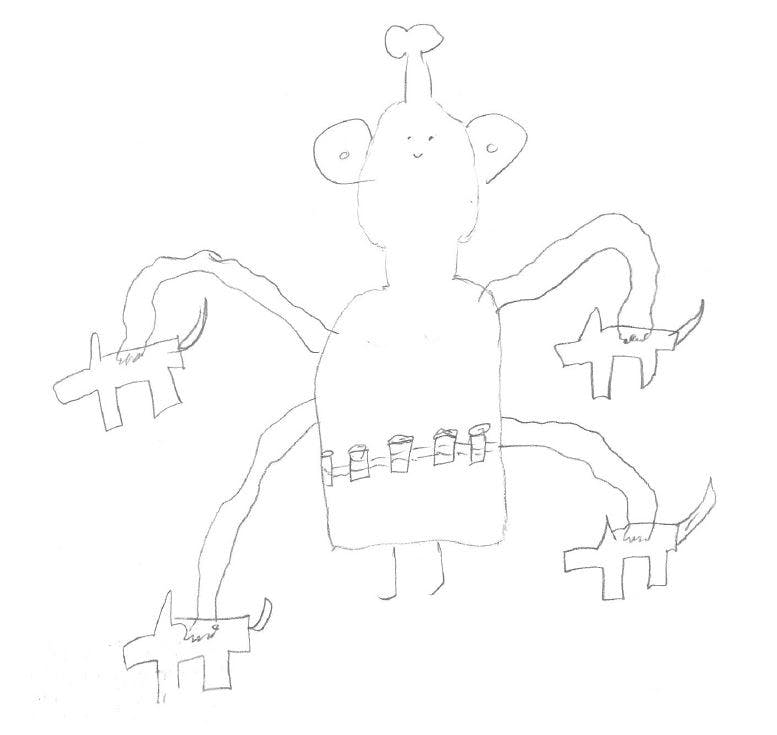
Doggonator has many hands with which it can scratch dogs, and a bone on their head. There are quick access beers on their beerbelt.
9.2 Team Canvas
Duration: 20-30 minutes per team. (A team of five people used in the rating. Time increases if there are more members in the team.)
Purpose: Getting to know the team, evaluating the skills of team members, finding common goals.
Please note: One Team Canvas template must be printed in advance for each team (see Appendix 1). A pen is needed. It is good to do the exercise in a quiet place without distractions.
Team Canvas is the starting point for creating a team's own atmosphere. Completing Team Canvas helps to clarify team goals and motivation factors. It helps to find answers, among others, to the following:
- What are the goals of the whole team? What about the goals of individual team members?
- What expertise do members bring to the team?
- What are the core values of the team?
- How does the team communicate with each other? How to make decisions? How to make plans and evaluate their implementation?
Understanding Team Canvas, 2015
Team Canvas can be filled in freely by talking with each other. Everybody's opinions and thoughts are recorded and we see if things are common to everyone. Alternatively, each team member can complete their thoughts on post-it tags, which they will be discussed together and recorded on common issues.
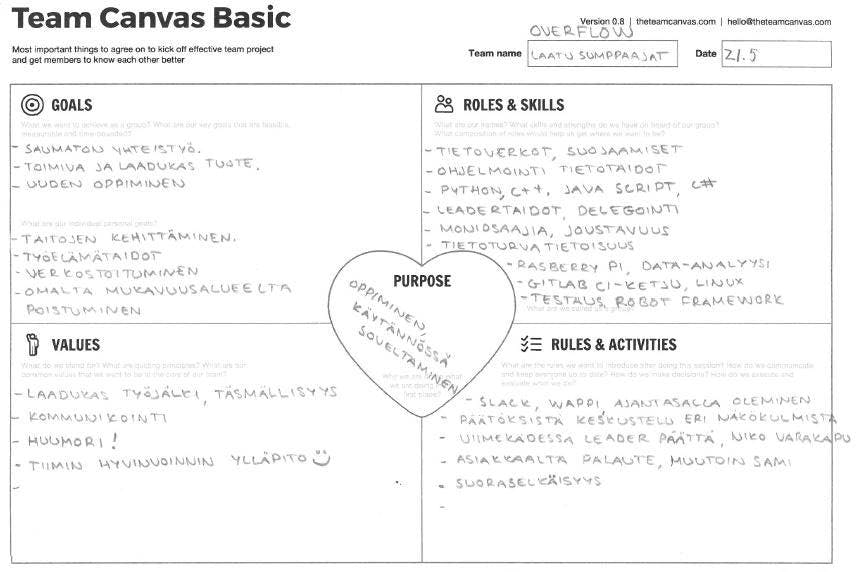
Overflow’s Team Canvas.
9.3 Product Canvas
Duration: One hour per team.
Purpose: Getting to know the product away from your own workstation. Understanding the unified goal.
Please note: One Product Canvas base must be printed in advance for each team (see Appendix 2). A pen needed for the exercise. Good weather is a plus.
A common image of the teams assignment is of paramount importance. Product Canvas can help create the same understangin of their assignment for all team members (Product Canvas, 2018).
Product Canvas helps to clarify the following things:
- Why would the user want to buy/use this product?
- What should the product look like?
- How would the user use the product?
The team should leave their workspace and fill the Product Canvas by conversing with each other. Going outside (for example for ice cream) is highly advised and strengthens the team spirit.
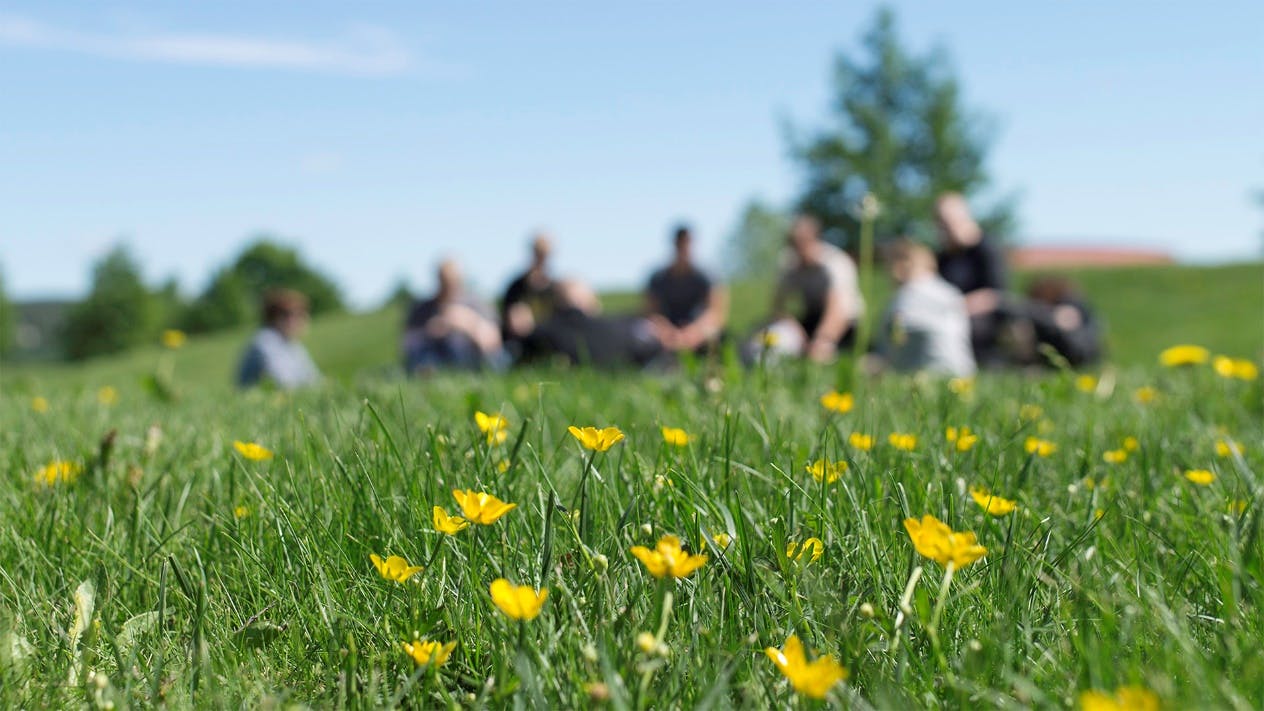
Overflow Filling Out The Product Canvas Outdoors.
9.4 Moving Motivators
Duration: 10-20 minutes per person.
Purpose: Identify the personal motivation factors of each participant while getting to know them personally.
Please note: Two Moving Motivators cards must be pre-printed (see Appendix 3). Provide a quiet space with no distractions.
The Moving Motivators exercise comes from Management 3.0-book and is done 1-on-1 with every participant. In addition to identifying motivation factors, the coach gets the chance to get to know participants and ask how they're doing.
Cards are arranged in a clear line that shows the order of priority (for example, the least important to the left and the most important to the right) (Management 3.0 Practice: Moving Motivators, N.d). It is worth encouraging the reflection out loud, as at the same time you get an understanding of what the participant is thinking (Yle Lean Culture Toolkit, 2018). Not all cards are required to be used, but you must justify why you have not used a particular card.
When the participant has got their own cards arranged, the coach puts their own line up.
Questions you can ask may include:
- Why are the cards in this order? What do they mean to you?
- Can you tell me a little why these three cards are the most important?
- Can you tell me a little why these three cards are the least important?
- Was it difficult to determine the order?
- Is there one, right order?
- If you had done this two years ago, would your order be different?
- If you did this in two years, would the order be different?
- What the same in our ranks?
- What's different in our ranks?
- Why is it important for me to know what is most important to you?
Questions can be asked as needed, and if those raise new questions as a result of the discussion, they should be discussed. Each conversation is different.
If there is time left, you can do the exercise again when WIMMA Lab approaches the end and see if something has changed.
The exercise can also be pulled by one team at a time, but this requires a lot of trust in other people. At least in the early stages, it is advisable to do the exercise 1-on-1. Creating a safe atmosphere is important.
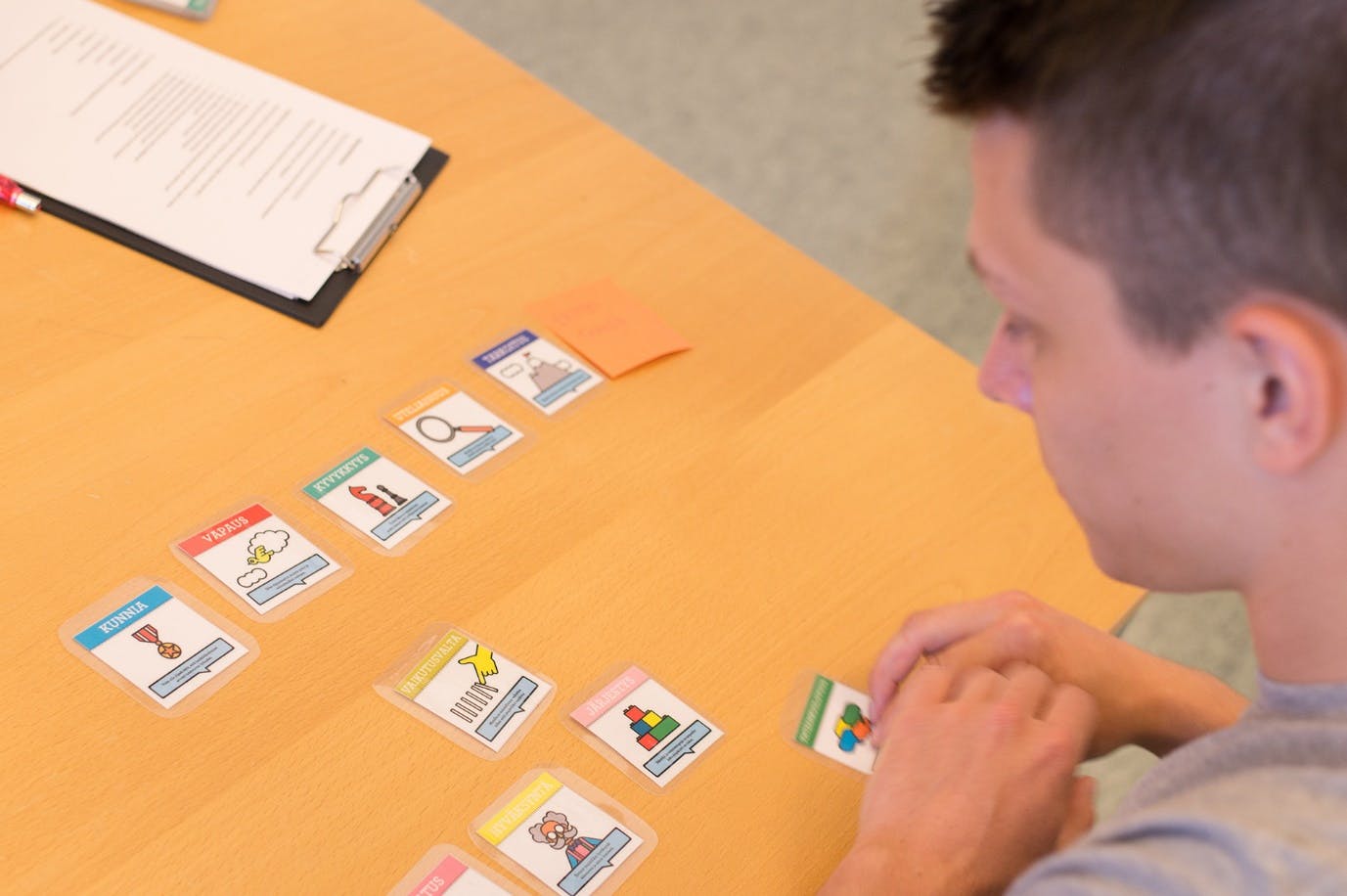
Moving Motivators Exercise.
9.5 Team Rules
Duration: 10-20 minutes per team.
Purpose: To create a team's common game rules that all team members commit to.
Please note: For each team, a large piece of paper and a marker to write the rules must be reserved (Malin, 2017).
The team makes its own rules, which are followed Throughout the entirety of WIMMA Lab. However, the rules can (and should) be updated if the situation changes or the rules no longer make sense (Yle Lean Culture Toolkit, 2018).
For example, the following guidelines can be used to create rules:
- Each team member lists by themself on paper five (or more, if one comes to mind) suggestions to help the team work as efficiently as possible.
- Proposals are passed through and voted if they are included in the rules.
- The rules of the game are recorded on a large piece of paper that is placed somewhere the entire team can see it.
However, it is not advisable to make the too many rules, about 5 to 6 rules per team is the right amount.
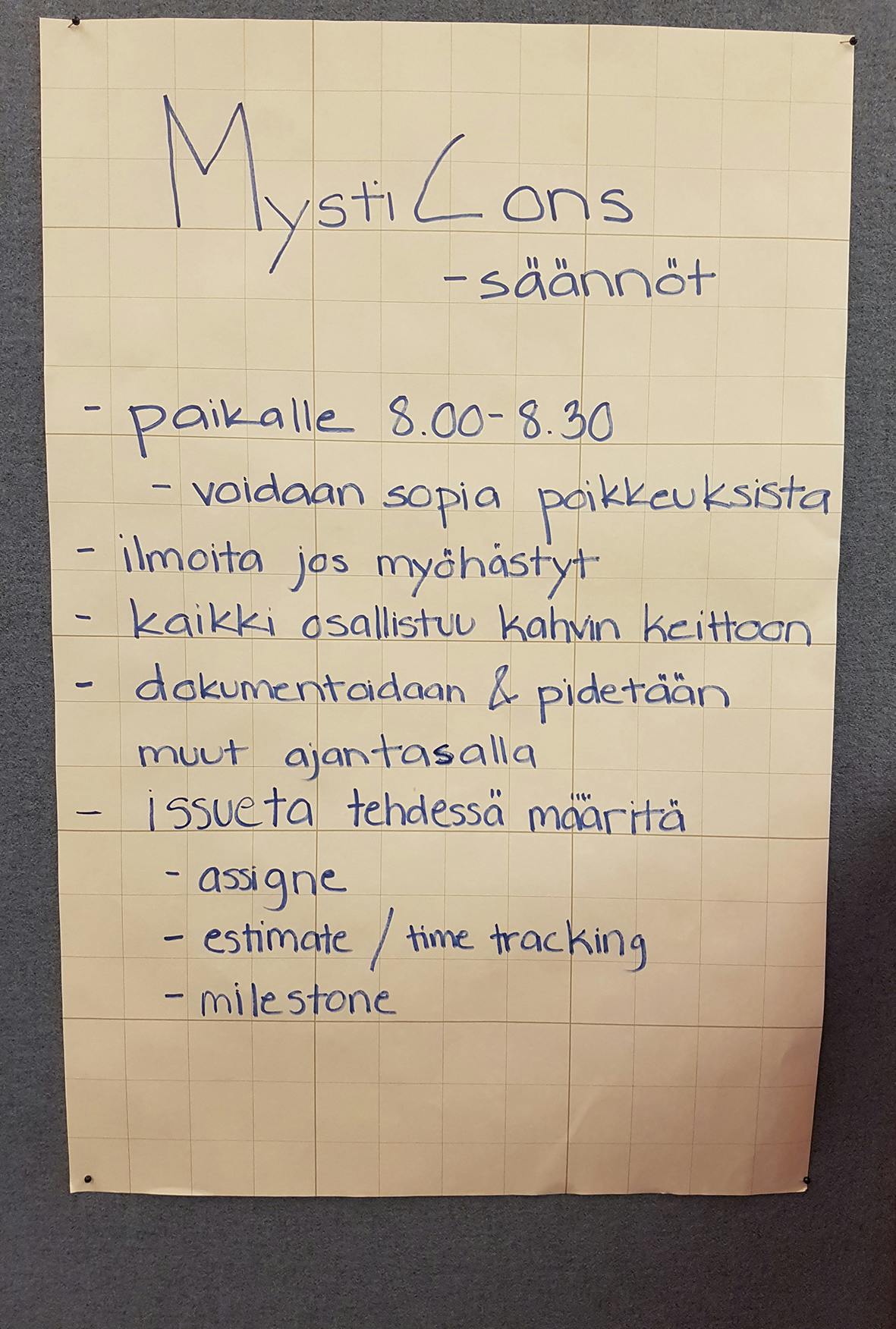
Mysticons team rules on the wall.
9.6 Lean Coffee
Duration: Throughout the WIMMA Lab.
Purpose: Get answers to questions when you can get them.
Please note: Book one table only for this use. Pencils and post-it pencil placed on the table.
The Lean Coffee idea has been adapted to make WIMMA Lab more suitable by Yle's Lean Culture Toolkit (2018).
Technical support and other guidance is not always immediately available as there are many other projects in progress for the teaching staff. On the designated table, anyone can write a question about an issue on the post-it note with their own name. While walking, the instructor looks at the questions on the table and knows who to talk to about the issue.
This is how WIMMA Lab participants get help as soon as possible when a coach isn't available.
9.7 Meet & Greet exercises
Duration: 30-60 minutes.
Purpose: Learn to briefly and concisely tell about your own work and learn to shake hands with another person.
Please note: Everyone should practice their own pitch before training. During the exercise, the speech should be well rehearsed and known by heart.
These two exercises should be kept together, as both require a lot of repetition.
Pitching is a short sales speech where a person tries to bring their expertise quickly to a potential employer, for example.
For example, in pitching, you should tell:
- Who are you?
- What can you do? How does a speaker benefit from your expertise?
- How do you differ from others?
The pitch should last about 30-60 seconds. It is advisable to practice Pitching a few times, even in front of the mirror before performing the exercise itself.
After you've presented your Pitch, you should shake the other persons hand. The handshake should not be too loose, or not too strong. When shaking another persons hand, it is good manners to look them in to their eyes as it shows reliability. Most often, the right hand is used for handshake.
Participants are divided into two groups that stand opposite to each other. Everyone speaks their own pitch to the person opposite of you, and then shakes the hand of the opposite person. Then one of the lines moves so that there is always a new person facing you. The same will be repeated until the first person's you have made a full circle through everyone.
There are many variations of the implementation of this exercise that can be made, but the most important is the number of repetitions and the feedback. After every pitching and handshake it would be good to have feedback and justification. For example, “It went well” is not enough, but it would be good to ask for clarifications like “What was good about it? What was wrong?” Based on the feedback received, your speech and handshaking skills can be improved for the next time.
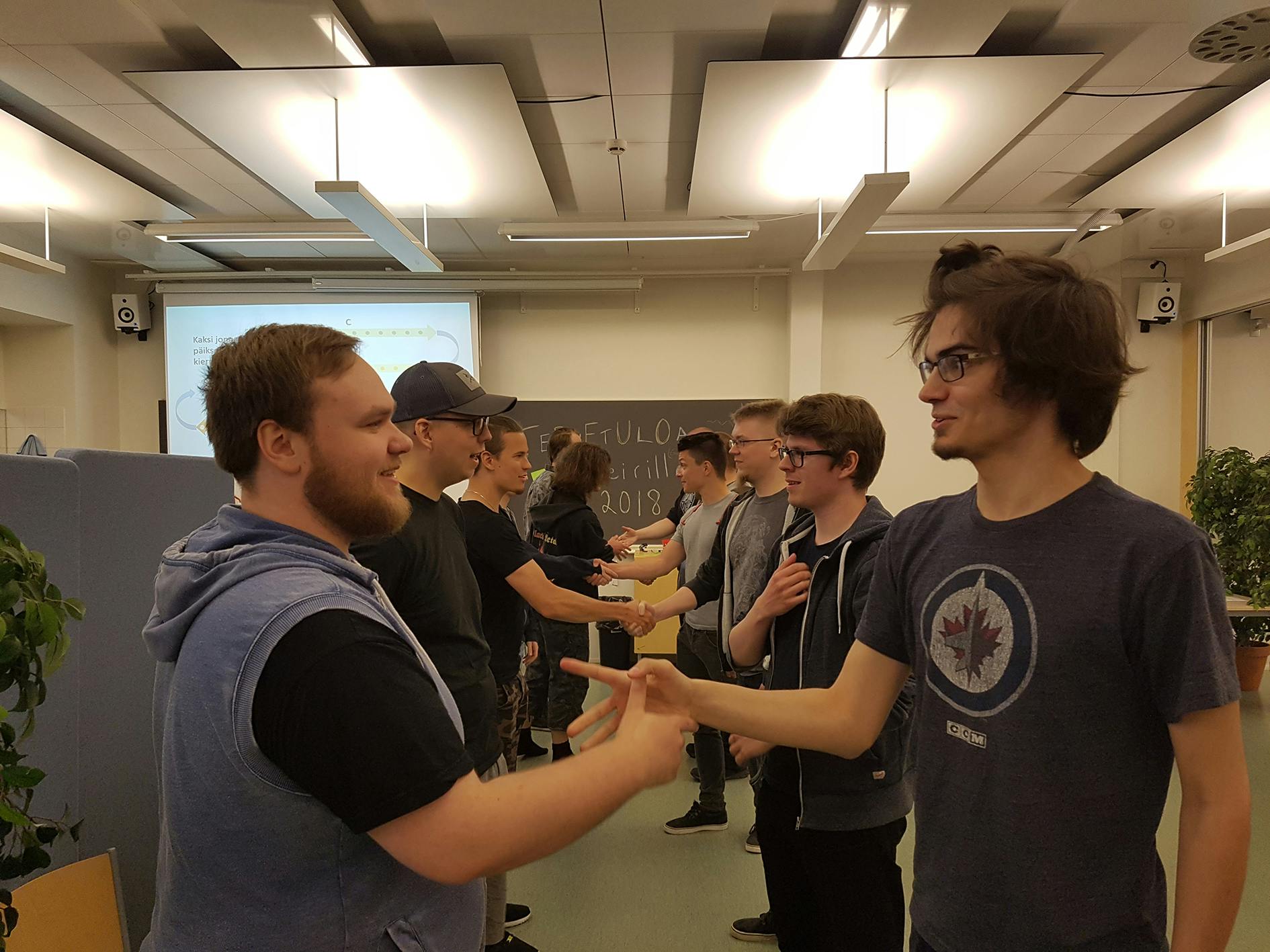
Handshake Exercise.
9.8 Happiness Wall
Duration: 5-10 minutes.
Purpose: To give constructive feedback in a meaningful and timely manner.
Please note: Make sure there are enough post-it notes and pens.
This exercise can be held, for example, after another exercise, to get instant feedback from it.
Three post-it tapes will be taped to the wall; together there is a happy face, ia neutral face and a sad face. Each participant writes their own feedback on a clean post-it and leaves it under their desired face (Management 3.0 Practice: Happiness Door Increases Employee Engagement, 2015).
In the feedback, it is particularly important to justify why you left such feedback. If something went well, why? If something went wrong, why? Based on the feedback received, the exercises can be improved the next time and the opinions can be taken into account immediately when things are still in the memory.
It is advisable to leave the room for a moment, so that participants can leave their feedback peacefully and anonymously.
Examples of feedback from pitching and handshake exercises in summer 2018:
There should have been more improvisation just like in the real situation. Otherwise OK.
Pitching improved towards the end because of repetitions! It was pretty ok exercise.
Otherwise good, but training did not include spinning in the circle.
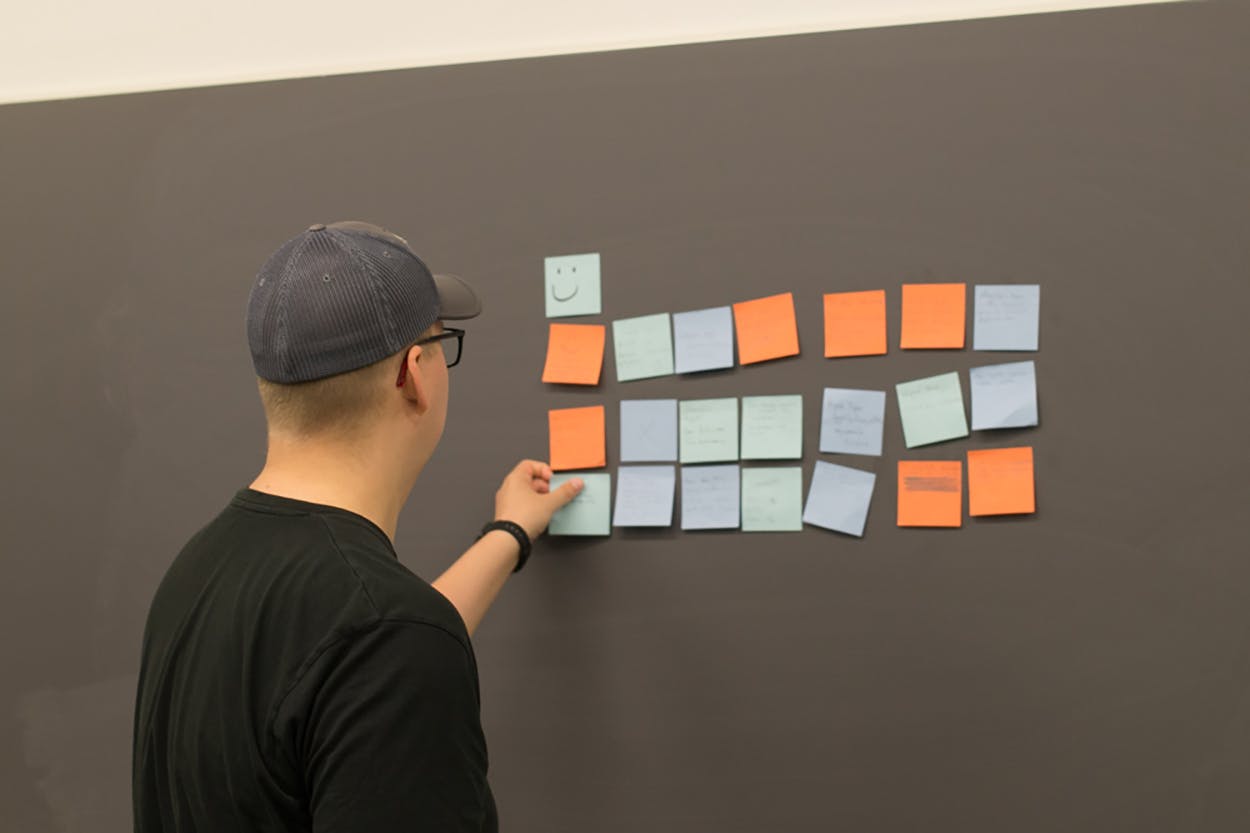
Participant leaves feedback after the handshake.
9.9 LinkedIn Account
Duration: 30-60 minutes.
Purpose: To create good starting points for networking, and to get a base for a professional network.
Please note: It is worth doing our profile in English (especially in the IT field).
LinkedIn serves as a meeting place for employees and employers. In particular, the IT industry should have a LinkedIn account done and the profile up to date. A well-made profile helps build a professional network.
Below are some general guidelines to follow when making a relevant LinkedIn profile:
- Avoid typos! Proofread your profile with the help of someone else.
- A profile photo of a clear photo of your face (no full-body shot), keep it professional! No other people, no animals, no objects, etc. For example, you can put something relating to your work in the background.
- If you are looking for a job, bring it up right in the title.
- The Summary section should be interesting, clear and informative. It is not advisable to make the summary too long. Highlight your core competencies. Bullet points can be used.
- Clearly featured contact information, for example, in the Summary section first.
- Work experience is written from the newest to the oldest (newest at the top). Tell a little about work tasks and the programs/tools used.
- The public profile helps recruiters to find you... You can change publicity in settings.
- Removing useless characters from your personal URL. This can also be done from the settings.
When the profile is finished and proofread, network! Send contact requests to at least every WIMMA Lab participant and Coaches. If you visit companies, please send a contact request immediately after your visit so you don't forget your mind.
9.10 Mob Programming
Duration: 4 hours (or more).
Purpose: Learn to communicate within a team.
Please note: Required software must be preinstalled on your computer (and tested to work). A large common display (eg TV or video projector) should be available. It is good to do the exercise in a quiet place without distractions.
The exercise is aimed especially at the software side, but not all participants need to be programmers. Everyone can participate with their unique skills.
Mob Programming means that all team members work together to achieve the same goal, at the same time, in the same state and on the same computer (Mob Programming, A Whole Team Approach - Woody Zuill, 2017).
One team member is “Driver” and the rest are “Navigators”. The role of the "Driver" changes at agreed time intervals, for example every 10 minutes.
The task of the navigators is to talk to each other and give instructions to the Driver who executes the instructions on the computer. The Driver skill level must be taken into account when giving instructions, as not everyone can program. Navigators can also advise the Driver on searching for information and tell you what you need to google.
The role of Driver is to code what the Navigators advise. The Driver should not be involved in the discussion, for example he should not make suggestions "Wouldn't this be better?". However, the Driver may ask for instructions on unclear issues such as "How is this written?".
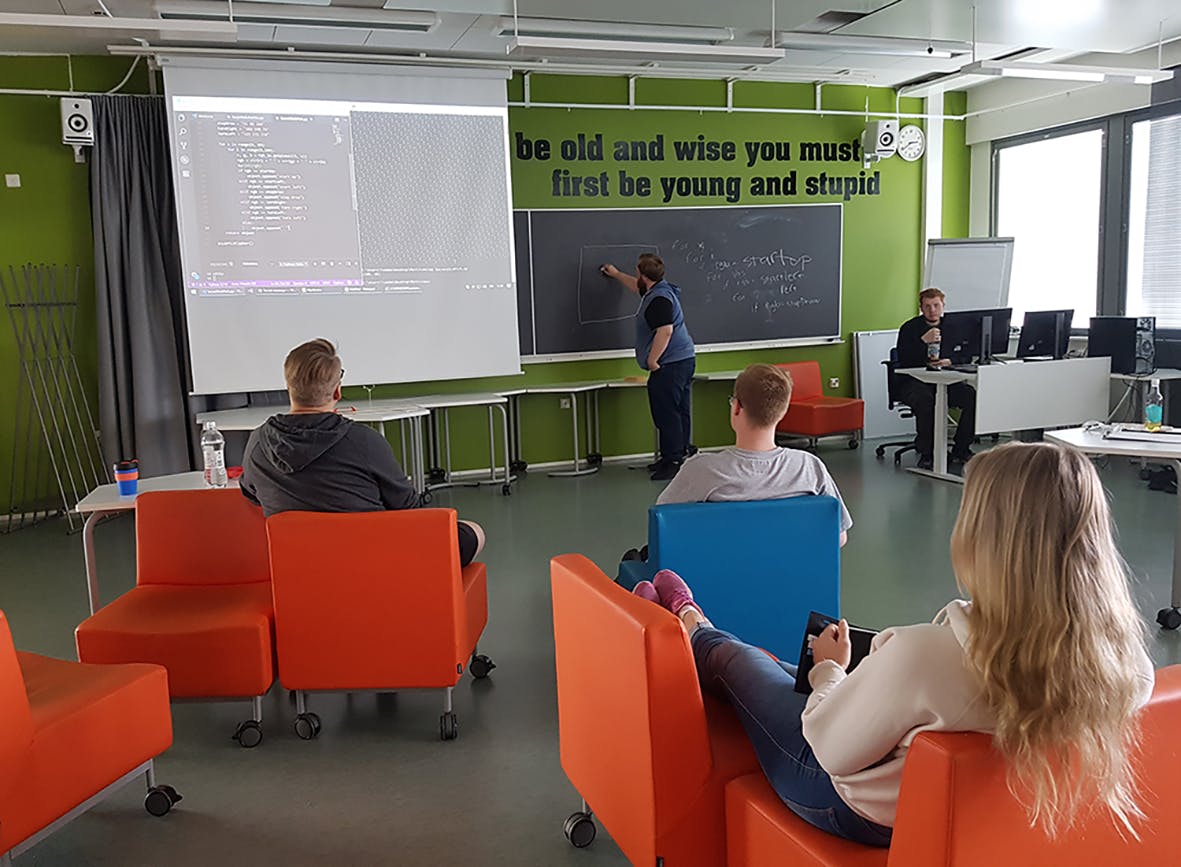
Mysticons Solve the Secret Messagea Mob Programming Exercise.
Mob Programming has many benefits, including:
- Producing clearer code.
- There are no merger conflicts when everyone is doing the same one code at the same time.
- There is no need for meetings, everyone stays on top of the situation.
- Everyone's opinions are taken into account.
- Learn from others, and knowledge is not attached to one person.
- It is fun!
It is a good task for the team to take on a non-assignment related task so that everyone can form a common understanding of the new problem. WIMMA Lab used the Secret Message programme provided by Wunderdog (Secret Message, 2016).
Before starting the task, you should remind the team of good communication rules: treat others with kindness, respect and attentiveness.